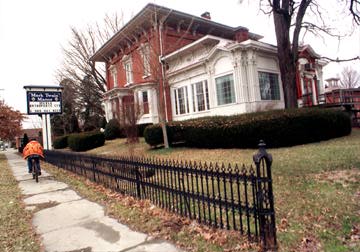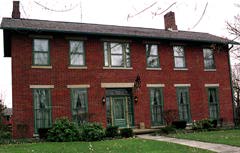
The former Mark Twain Manor, also called the Gibson House, is known as a stop on the Underground Railroad in Jamestown. Stops were typically one night's coach ride apart during the height of the system, which was neither a railroad nor underground, in the mid- to late 1800s. The main station in the county was at Indian Run, where East Lackawannock and Springfield townships converge. (Jean Neice/Herald)



